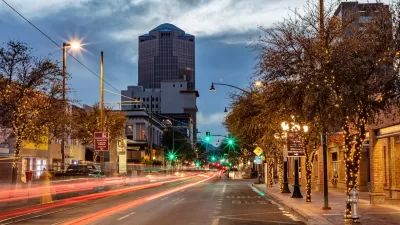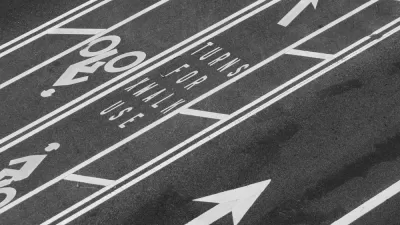The patterns of urban development over the past few decades have pushed more and more people into cars by necessity. But as design priorities change, so are people's walking and driving habits.
This piece from Sierra looks at how urban form is ushering changes in the way people move about cities, and other influences for getting people out of their cars.
"All that extra driving--people using a gallon of gas to get a gallon of milk--has turned us into high-octane petro-vores. Between 1960 and '70, the U.S. population grew by 13 percent while gasoline demand rose by 54 percent; the next decade, with the same population growth, gas demand increased by 17 percent.
The shift to sprawling development patterns and the turning away from once-common practices like walking to school are often defended as a matter of "choice"--one, of course, fueled by decades of government laws and incentives. The irony is that many communities today have no choice when it comes to transportation: We have created a vehicular monoculture. But there are signs that this is changing. First, we seem to be maxing out on just how much driving we're willing to do."
FULL STORY: Living Large Driving Less

Maui's Vacation Rental Debate Turns Ugly
Verbal attacks, misinformation campaigns and fistfights plague a high-stakes debate to convert thousands of vacation rentals into long-term housing.

Planetizen Federal Action Tracker
A weekly monitor of how Trump’s orders and actions are impacting planners and planning in America.

San Francisco Suspends Traffic Calming Amidst Record Deaths
Citing “a challenging fiscal landscape,” the city will cease the program on the heels of 42 traffic deaths, including 24 pedestrians.

Defunct Pittsburgh Power Plant to Become Residential Tower
A decommissioned steam heat plant will be redeveloped into almost 100 affordable housing units.

Trump Prompts Restructuring of Transportation Research Board in “Unprecedented Overreach”
The TRB has eliminated more than half of its committees including those focused on climate, equity, and cities.

Amtrak Rolls Out New Orleans to Alabama “Mardi Gras” Train
The new service will operate morning and evening departures between Mobile and New Orleans.
Urban Design for Planners 1: Software Tools
This six-course series explores essential urban design concepts using open source software and equips planners with the tools they need to participate fully in the urban design process.
Planning for Universal Design
Learn the tools for implementing Universal Design in planning regulations.
Heyer Gruel & Associates PA
JM Goldson LLC
Custer County Colorado
City of Camden Redevelopment Agency
City of Astoria
Transportation Research & Education Center (TREC) at Portland State University
Jefferson Parish Government
Camden Redevelopment Agency
City of Claremont





























